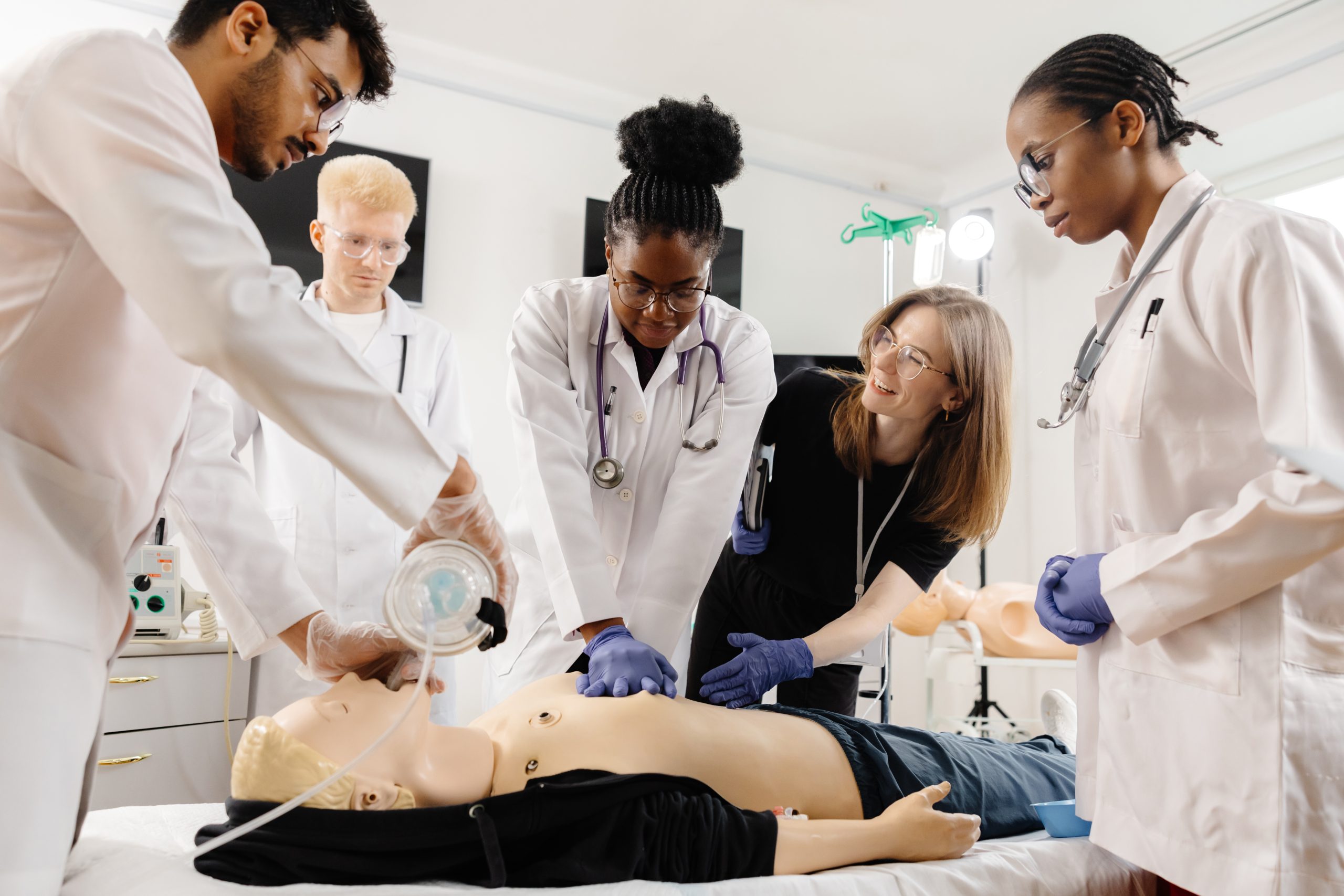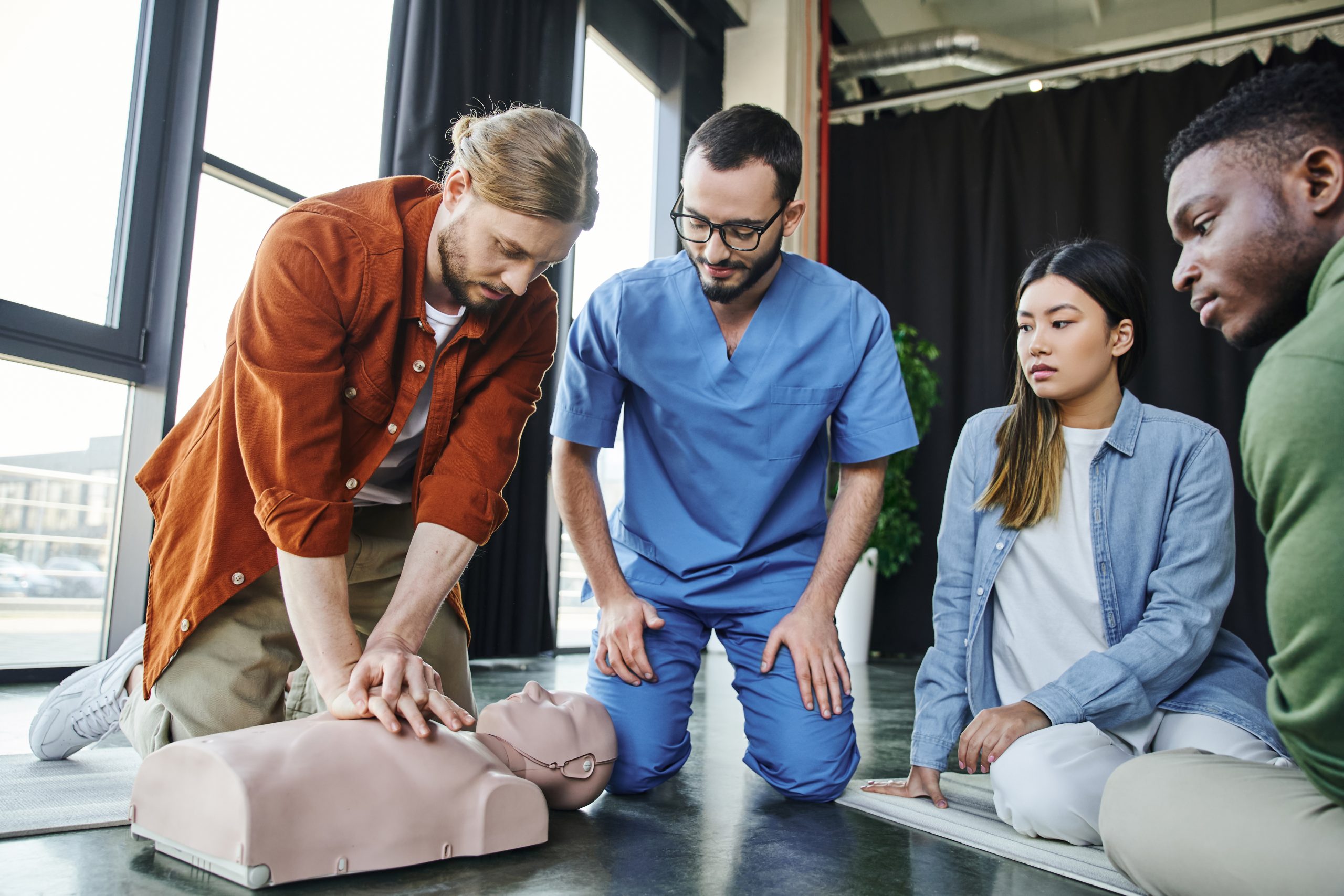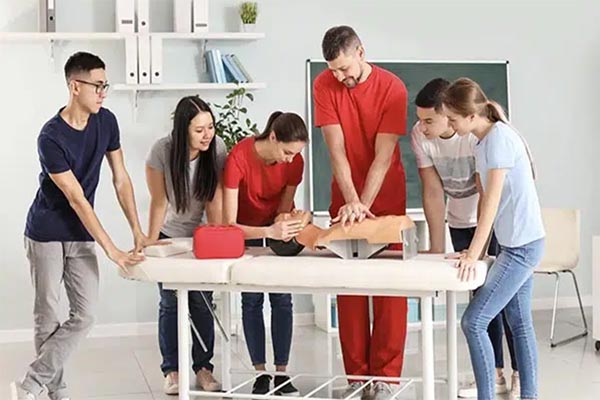
For nurses, doctors, paramedics, and all members of a medical team, a medical emergency is not a theoretical scenario, it’s a daily possibility. When seconds count, your ability to act decisively and correctly can mean the difference between life and death. This is why Basic Life Support (BLS) certification is not just a requirement; it is a fundamental, non-negotiable part of your professional toolkit.
BLS certification provides the foundational skills needed to respond to life-threatening emergencies. It equips healthcare professionals with the knowledge to perform CPR, use an Automated External Defibrillator (AED), and manage choking in a variety of settings. This guide is designed to walk you through everything you need to know about BLS certification, from its core components to why it is so critically important for your career and, most importantly, for your patients.
What is BLS Certification?
BLS stands for Basic Life Support. It is a level of medical care used for victims of life-threatening illnesses or injuries until they can be given full medical care at a hospital. The BLS certification course is a standardized training program that covers a range of emergency skills.
The certification focuses on maintaining circulation and breathing for a patient who has stopped breathing or whose heart has stopped. It is the cornerstone of emergency care and is required for virtually all healthcare professionals. While other certifications, such as Advanced Cardiovascular Life Support (ACLS), build on these skills, BLS is the essential starting point for everyone on the medical team.

The Core Components of BLS Training
BLS training is comprehensive and hands-on, ensuring that you can perform these critical skills under pressure. The curriculum is typically broken down into several key areas:
- High-Quality CPR for Adults, Children, and Infants: You will learn the proper techniques for chest compressions and rescue breaths. The emphasis is on “high-quality” CPR, which means delivering compressions at the correct depth and rate with minimal interruptions. This is the single most important factor for improving survival outcomes from cardiac arrest.
- Use of an Automated External Defibrillator (AED): An AED is a portable device that can deliver an electric shock to the heart. You will learn how to correctly apply the AED pads and follow the device’s prompts to assess and treat a patient. This skill is vital because defibrillation is the most effective treatment for ventricular fibrillation, a common cause of sudden cardiac arrest.
- Relieving Foreign-Body Airway Obstruction (Choking): This portion of the course teaches you how to recognize and respond to a choking emergency. You will learn the appropriate techniques for adults, children, and infants, which can be different depending on the victim’s age.
- The Chain of Survival: You will learn about the “Chain of Survival,” a series of five links that, when followed, can improve the chances of survival from cardiac arrest. This includes immediate recognition of the emergency, early CPR, rapid defibrillation, effective advanced life support, and post-cardiac arrest care.
- Team Dynamics: A crucial part of the course for healthcare professionals is learning how to work effectively as a team during a resuscitation attempt. You will practice communicating clearly, assigning roles, and debriefing after the event to improve future performance. This teamwork is what makes a well-coordinated emergency response possible.
Why BLS Certification is Non-Negotiable for Nurses and Medical Staff
For healthcare professionals, BLS certification is more than a line on a resume; it is a promise to your patients and your colleagues. Here are some of the key reasons why it is absolutely essential:
- It’s a Professional Standard: The vast majority of hospitals, clinics, and healthcare facilities require all clinical staff to maintain a current BLS certification. It is a fundamental expectation of the profession. Without it, you may be unable to get hired or maintain your employment in many healthcare settings.
- You Are the First Responder: In a medical facility, you are often the first person on the scene when a patient experiences a cardiac arrest or other life-threatening event. Your immediate response, which is guided by your BLS training, is the most critical link in the Chain of Survival. The time between a collapse and the start of CPR is directly correlated with patient outcomes.
- Enhances Patient Safety: Having a certified and well-trained staff ensures a safer environment for patients. It means that everyone, from the nurse in the telemetry unit to the doctor in the operating room, knows how to perform basic life-saving measures. This creates a unified and competent response system that benefits every patient under your care.
- Boosts Confidence and Competence: Knowing that you possess the skills to handle a crisis instills confidence. This is not only important for your professional demeanor but also for your ability to act quickly and without hesitation in an emergency. The hands-on training in a BLS course prepares you mentally and physically for high-stress situations.
- A Stepping Stone for Advanced Training: BLS certification is a prerequisite for advanced courses like ACLS (Advanced Cardiovascular Life Support) and PALS (Pediatric Advanced Life Support). These certifications are often required for nurses and staff working in critical care units, emergency departments, and other specialized areas.
The Recertification Process
BLS certification is not a one-time achievement. The skills and guidelines for resuscitation can change over time based on new scientific evidence. Therefore, you must recertify every two years.
Recertification courses are typically shorter than the initial certification. They focus on reviewing the key concepts, practicing skills, and staying up-to-date with the latest guidelines from organizations like the American Heart Association (AHA). This ensures that your skills remain sharp and that you are always using the most effective techniques.

Preparing for Your BLS Certification Course
To make the most of your BLS training, here are a few tips to help you prepare:
- Review the Manual: Most courses provide a manual or an online pre-course work. Take the time to read through this material beforehand. It will help you be more engaged during the practical part of the training.
- Come Prepared to Participate: BLS is a hands-on course. Be ready to get on the floor and practice chest compressions and ventilation skills on manikins.
- Ask Questions: This is your time to learn and perfect your skills. Don’t hesitate to ask your instructor for clarification or more practice time on a specific skill.
Conclusion
BLS certification is an indispensable part of being a healthcare professional. It is the foundation upon which all other emergency medical skills are built. It provides you with the knowledge and confidence to act decisively in the face of a crisis, ensuring that you can provide the best possible care to your patients when they need it most. By maintaining your certification, you uphold the highest standards of your profession and, most importantly, equip yourself with the power to save a life.
If you are a nurse or medical staff member who needs to get certified or recertified, don’t wait. Find a class that fits your schedule and location.
Contact CPR Classes Near Me today to schedule your BLS certification course and take the next step in your professional development.
FAQs about BLS Certifications
Q: Is BLS the same as CPR?
A: BLS is a broader certification that includes CPR. While CPR (Cardiopulmonary Resuscitation) is a core component of BLS, a BLS certification course also covers other life-saving skills. These include recognizing and responding to a variety of medical emergencies, using an AED, and relieving choking for all ages. CPR is a specific technique, while BLS is a comprehensive program for basic emergency care.
Q: Who needs BLS certification?
A: BLS certification is required for almost all healthcare professionals. This includes, but is not limited to, registered nurses, licensed practical nurses, doctors, paramedics, EMTs, dentists, pharmacists, and medical assistants. It is also often required for students entering healthcare programs and non-medical professionals who are first responders in their workplaces, such as lifeguards and physical therapists.
Q: How long does a BLS certification last?
A: A BLS certification is valid for two years. To maintain certification, you must take a recertification course before your current card expires. This ensures that your skills are current and that you are up-to-date with any new guidelines or best practices.
Q: Can I get my BLS certification online?
A: While many organizations offer a blended learning format where you can complete the cognitive, or “classroom,” portion of the course online, you must complete a hands-on skills session to receive your certification card. The practical skills, such as chest compressions and using an AED, must be demonstrated and evaluated in person by a certified instructor.
Q: What is the difference between BLS and ACLS?
A: BLS (Basic Life Support) is the foundational course for all healthcare providers and focuses on basic life-saving skills like CPR, AED use, and choking relief. ACLS (Advanced Cardiovascular Life Support) is an advanced course that builds on BLS skills. It is for healthcare professionals who manage more complex cardiovascular emergencies. ACLS covers advanced airway management, pharmacology, and interpreting ECGs. BLS is a prerequisite for ACLS.

Leave a Reply